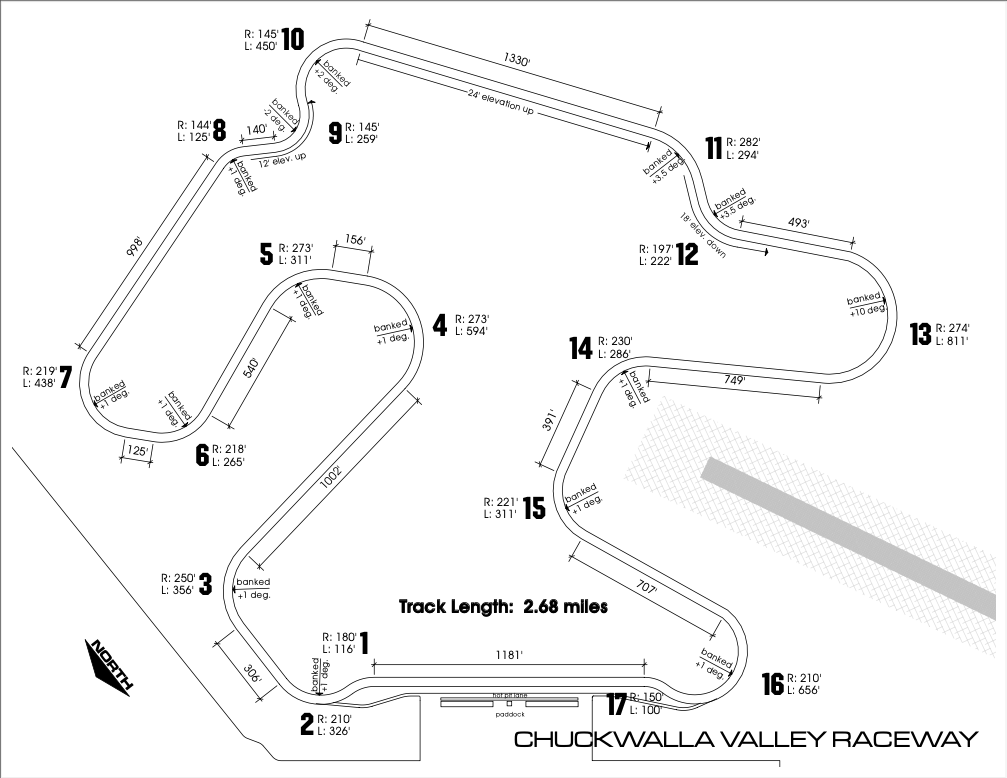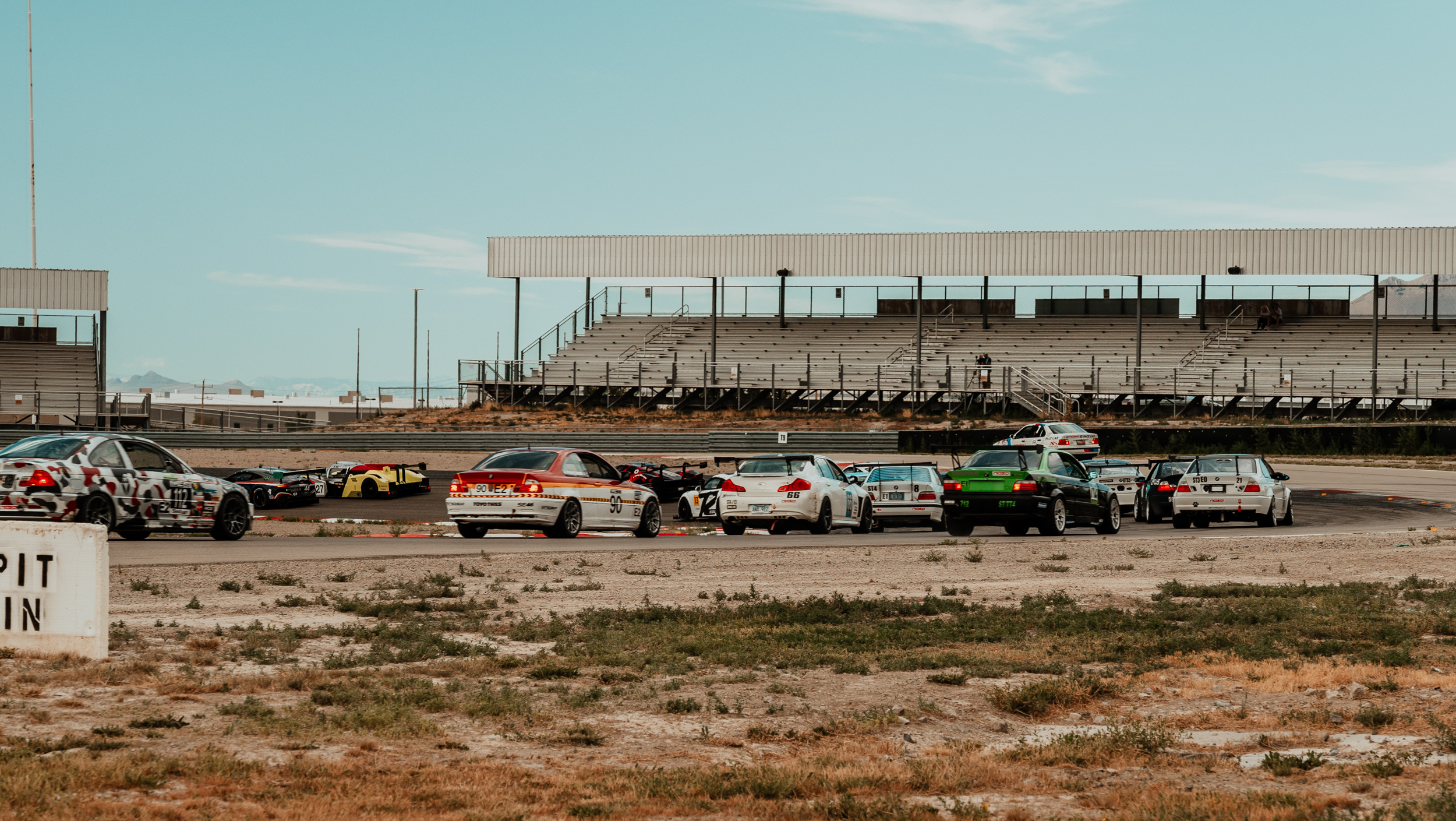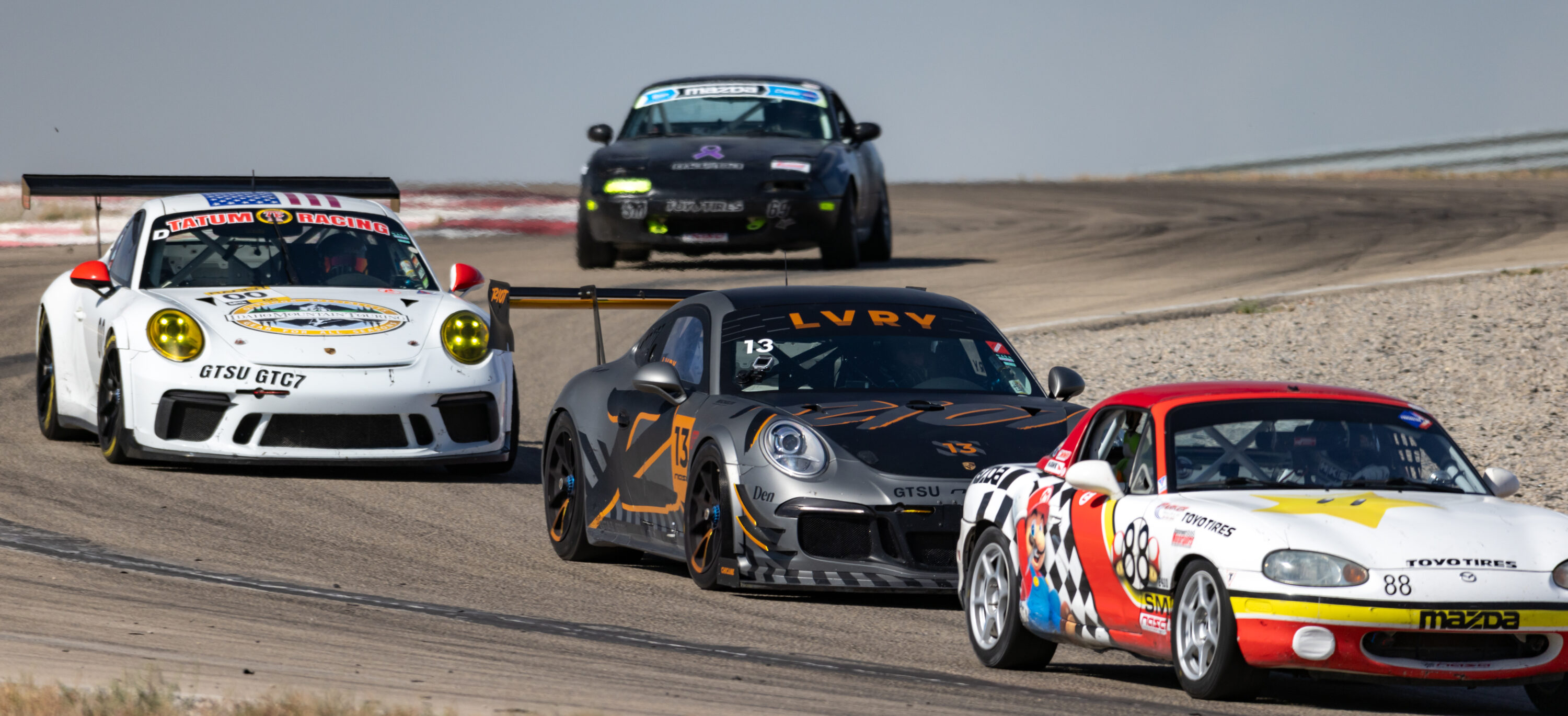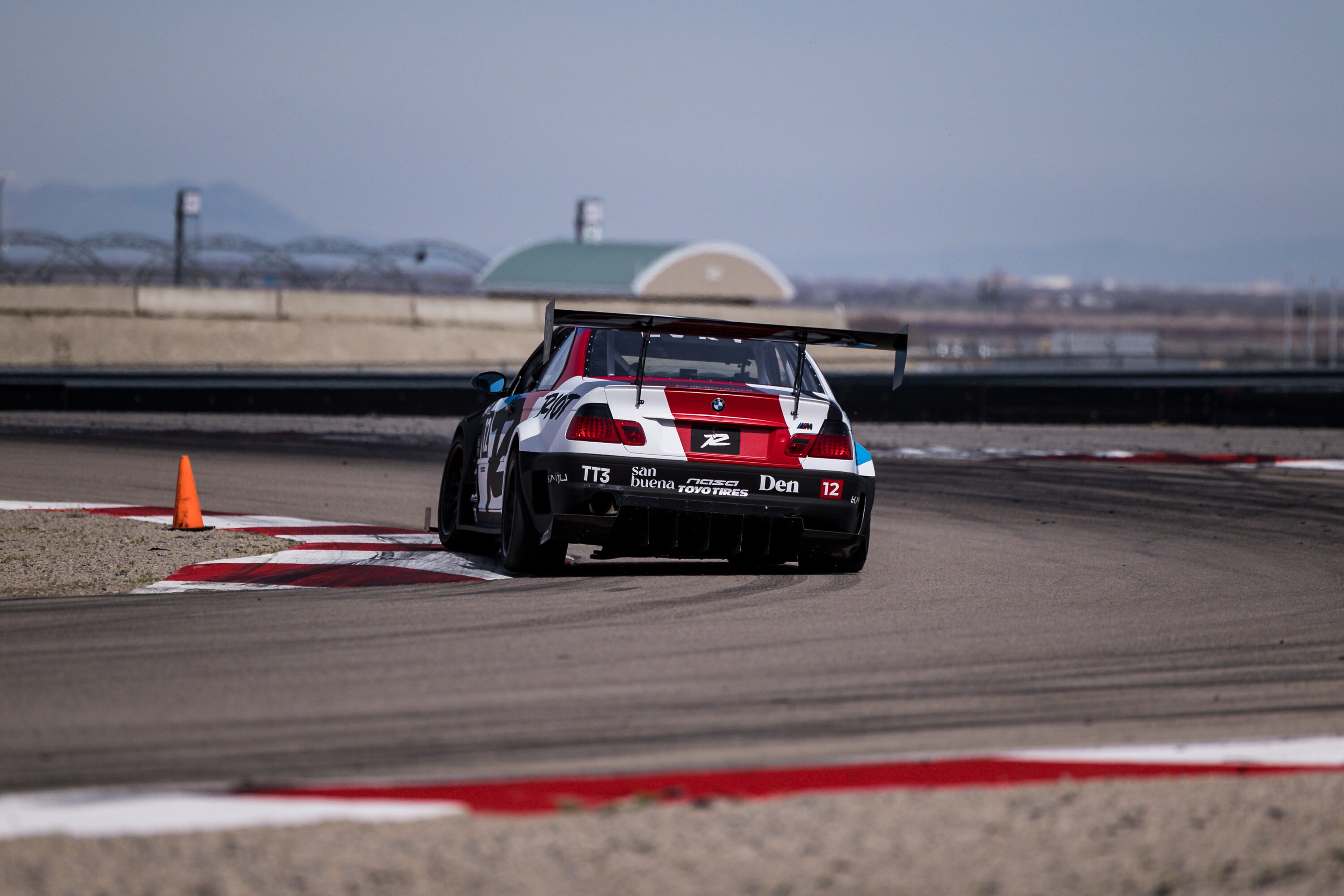A Method for Learning Any Race Track — Applied to Chuckwalla Valley Raceway
This article can be read on it’s own, but feel free to check out the links to the other parts of the series!
Learning a New Race Track Series:
- Introduction & Method Overview
- Studying the Track
- Getting Tech & Registration Squared-Away
- The Race Weekend
Going to a new race track is always a fun challenge. It’s almost like you’re a new driver again, but you get to bring all of your previous experience and skills with you. The result: you go faster, faster.
Track time is always at a premium. When we go to new tracks, it often requires additional travel and logistics to get there, so this time is that much more scarce!
So — how to make the most of it?
-
- Get the best track map and most-applicable video to your situation and do your homework
- Get track-time in ahead of the event if possible
- Get all technical and registration requirements squared-away early
- Bring at least one support person and your spare parts
In February of 2023, I’m going to a Spec Miata race at Chuckwalla Valley Raceway (CVR) with NASA SoCal. This article is going to serve as an overview of the methods I’ll be using to prepare for this race weekend, as well as link to additional article that take a deep-dive into those methods, as well as the race weekend itself.
#1 — Get the Best Track Map and Most-Applicable Video to Your Situation. Then Do Your Homework
For CVR, there are two main resources:
Track Map
The track website has an excellent track map, complete with notes on straightaway distances, corner-banking, and elevation changes! I’ll be using this to take notes.
CVR can be run in either direction — clockwise or counter-clockwise (CW/CCW). Fortunately, the track site’s default map lines up with how we’re going to be racing the track — CW.

Track Video
I will be updating this article with my own video from the weekend, but I was able to obtain a clean lap of a 99 Spec Miata (exact same as mine) running within 1 second of the track record!
This is crucial because if I can also run that closely to the track record, I’m going to be doing very well for myself on that weekend! Even if that pace is out of reach for me, the video shows me what to work towards — it’s a very clean lap.
Using the Map & Video
I’m going to be reviewing the video weekly, at least, and watching about 8–10 loops of that same lap. After watching it for a few sessions, I’m going to take notes on my printed track map, noting things like gear-changes, brake-points, apexes, and throttle application.
All of these things will build my mental toolbox before I even hit the track and give me a good ‘feel’ for the relative speed of each corner. Together, these notes will then allow me to prioritize which areas of the track I should master first, once I get there.
#2 — Get Track Time Ahead of the Event if Possible
I’m towing 10 hours anyways, so what’s another $200–400 to add on a day before the event? It’s worth it.
NASA SoCal isn’t renting the track for Friday Practice and Sat/Sun are compressed to three sessions apiece — with most of those sessions being competitive (qualifying or racing). So I need all the practice I can get!
Fortunately, CVR scheduled an open-track day for Friday, so I’m signing up for that as soon as it’s open to do so. The word from my fellow racers who have been to CVR tell me that track time will be abundant, but even if it were just going to be 3–4 sessions, I’d be signing up.
It may go without saying, but I’ll share my perspective: getting track time in a day before you race is, for me, very helpful. I get “warmed-up” for the weekend, even when I’m at a track that I know very well. This goes at least 2x for a track that I’m not yet familiar with or don’t go to often.
Some racers even go so far as to tow their cars over to an even a week or two ahead of time to get this track time in! This isn’t doable for me, or necessary, but if we were going to a national competition… I’d be crunching numbers to figure out how to make it work.
#3 — Get All Technical Inspection & Registration Requirements Squared-Away Early
I’ve talked about ‘that guy’ in other articles. One of the trademarks of ‘that guy’ is to not have their registration squared-away.
When racing with another region or club that I’m not a frequent member of, I go to some extra effort to make sure that I raise no red flags or cause myself headaches leading up to or at the event.
For this race, I’m doing the following:
-
- Getting my race license renewed for 2023, now
- Working with my local region to get my car’s technical inspection before leaving for the event
- Researching and preparing for track entry, how registration works, etc.
These may seem like inconsequential details, but given the combination of this event being early in the season and my first event of the year, I don’t want to deal with the hassle of lining up to get my car tech’d with 20 of my fellow racers. I’ve seen these mass-techs go one of two ways: rushed/ineffective or tedious and potentially problematic for the “new guy” to their group.
Nobody is looking to disqualify cars, but if an unfamiliar car is in the mix, you better believe that it’ll get more than a second look. If your car has been passed-off by a region before, it’s always easier to get your renewal sticker/stamp from that same region.
Also — from experience, I find it silly that so many people wait until the day of the event to get inspected. Why? What if there is something legitimately non-compliant about your car? If you wait until the day of the event, you’ll have spent easily north of $1,000 to get ready for a weekend that you may not even drive in!
#4 — Bring at Least One Support Person and Spare Parts
This one is easy — I’m towing over to CVR with my brother and a few of our friends! Going as a group is always a good time and you can have each others’ backs, both on-track and off.
Our group runs a mix of NA6, NA8, and NB1 Spec Miatas, so if we all bring the common items, chances are that we’ll have everything we might need to swap out a failing part, should the need arise.
If you’re not going with a group, I’d recommend you bring a good friend who knows their way around cars, in general. This person should be able to help you unload/load, change tires, check oil, fuel-up, and get belted-in.
As for basic parts, here’s a list (not comprehensive!) of things to bring:
-
- Tools to change/adjust anything on your car (this is actually pretty basic and should be in your ‘track box’ anyways)
- 3 sets of wheels (including what’s on the car) — one race set of tires and the rest being good practice tires. Rain tires depending on the weather leading up to the event.
- Brake pads & rotors — front and rear (a failed wheel bearing can roast a set of pads, so bring these even if you’re staring with fresh pads all-round)
- Hubs/bearings — one front, one rear (minimum)
- Control arms
- Ball joints
- Tie rods — one inner, one outer (if side-specific, then have spares for each)
- CV Axle(s)
- Lug nuts
- Zip ties & racer’s tape
- Common failure point parts for your car — we all know about that “one thing” that just seems to conk-out for no apparent reason
I’m sure I’m missing some things, but the point is this: if you have it, consider bringing it. If you don’t have it, consider buying it or coordinating with your buddies to have those parts covered.
Wrapping Up
Stay tuned! This article is going to be updated with links to subsequent articles that document my progress in preparing for, and racing in, the February 2023 race with NASA SoCal at CVR!






